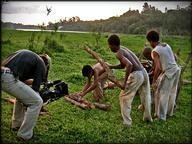Quiz Answer Key and Fun Facts
1. Bacon Tait became one of Richmond, Virginia's major slave traders, but where in Virginia was he born? The city wasn't really named for hangings.
2. Bacon Tait met a young foreigner, Thomas Boudar, whose language skills would help him when he began trading slaves in New Orleans a few years later. What other language besides English did Boudar speak?
3. Bacon Tait first partnered with some experienced slave traders, before setting out on his own. His senior partners, James Wilkinson and Henry DeEnde, were located in which two states, like many other pairs of interstate slave traders?
4. What sneaky thing was Bacon Tait doing, that angered his slave-trading partners Wilkinson and DeEnde when they found out, and made them kick him out of their partnership?
5. Slave trader Bacon Tait built his first slave jail in Richmond, Virginia circa 1831 to keep enslaved people for himself and others, before they were sold south. When Tait wanted to sell it so he could build a bigger jail, Lewis Collier bought it, took his lumps when he lost money, and then what other slave trader owned it till 1865?
6. Bacon Tait built a bigger slave jail for his slave-trading business, that existed circa 1834 to 1865. It was sometimes also called the Cary Street Jail, or Grady's jail for the manager's name. Where was it located?
7. Slave trader Bacon Tait had never married, but around 1842 he met a free black woman named Courtney Fountain, and apparently lived faithfully with her. So far, there's no record that he married, lived with or had children with anyone else. How many children did he have with her? After naming the boy after himself, he only needed to think of girls' names.
8. Courtney Fountain, the mistress of slave trader Bacon Tait, had her own unusual family members in Winchester, VA, Utica, NY and Salem, MA. What surprising thing linked much of her family together?
9. During the 1850s, slave trader Bacon Tait put his business in the hands of his manager and left town to live away at least part-time with Courtney Fountain and their children. Where did they go? It was one of the few places their school-age children could be educated equally with whites.
10. Many slave traders lost their money when the Civil War ended, or had their wills mired in lawsuits. Bacon Tait had put his money in real estate, in buildings that survived the burning of Richmond, VA at the end of the war. Courtney Fountain, his "wife," died within weeks of him in 1871, but how much did he leave to their children? One brief newspaper notice said he was "one of the wealthiest residents of this city [Richmond]."
Source: Author
littlepup
This quiz was reviewed by FunTrivia editor
gtho4 before going online.
Any errors found in FunTrivia content are routinely corrected through our feedback system.
